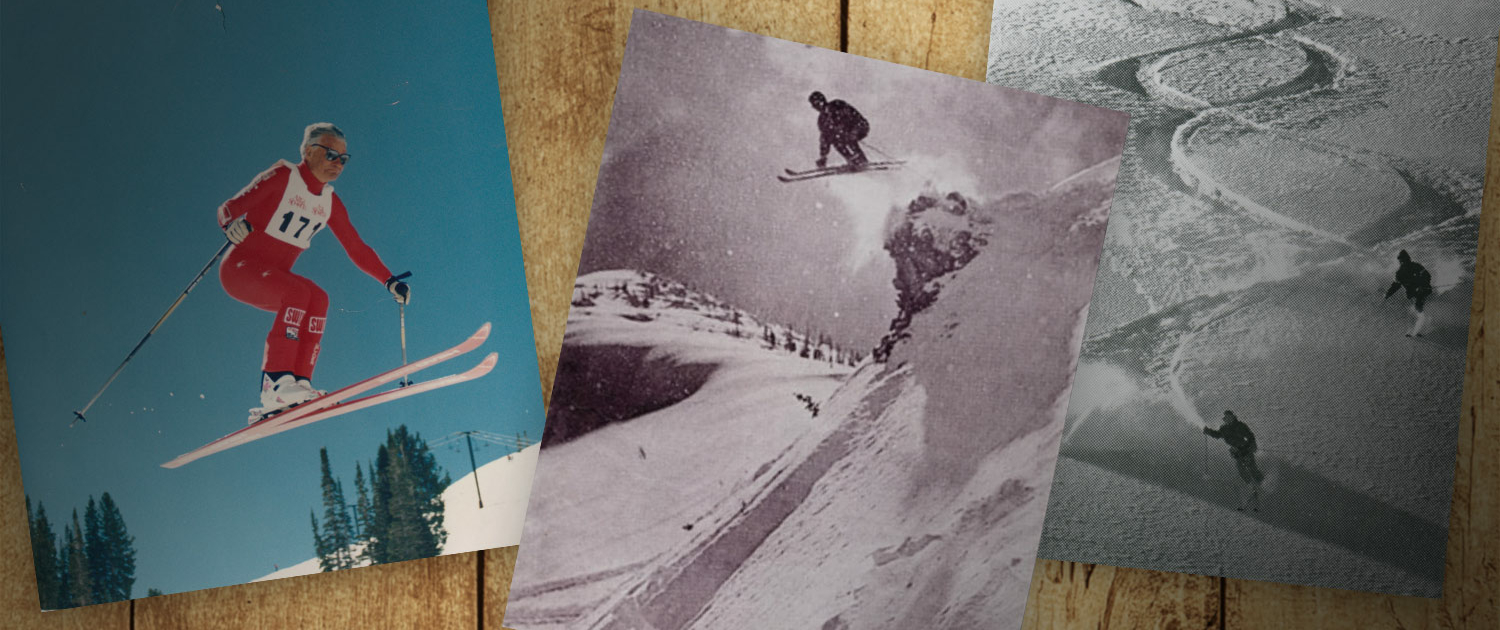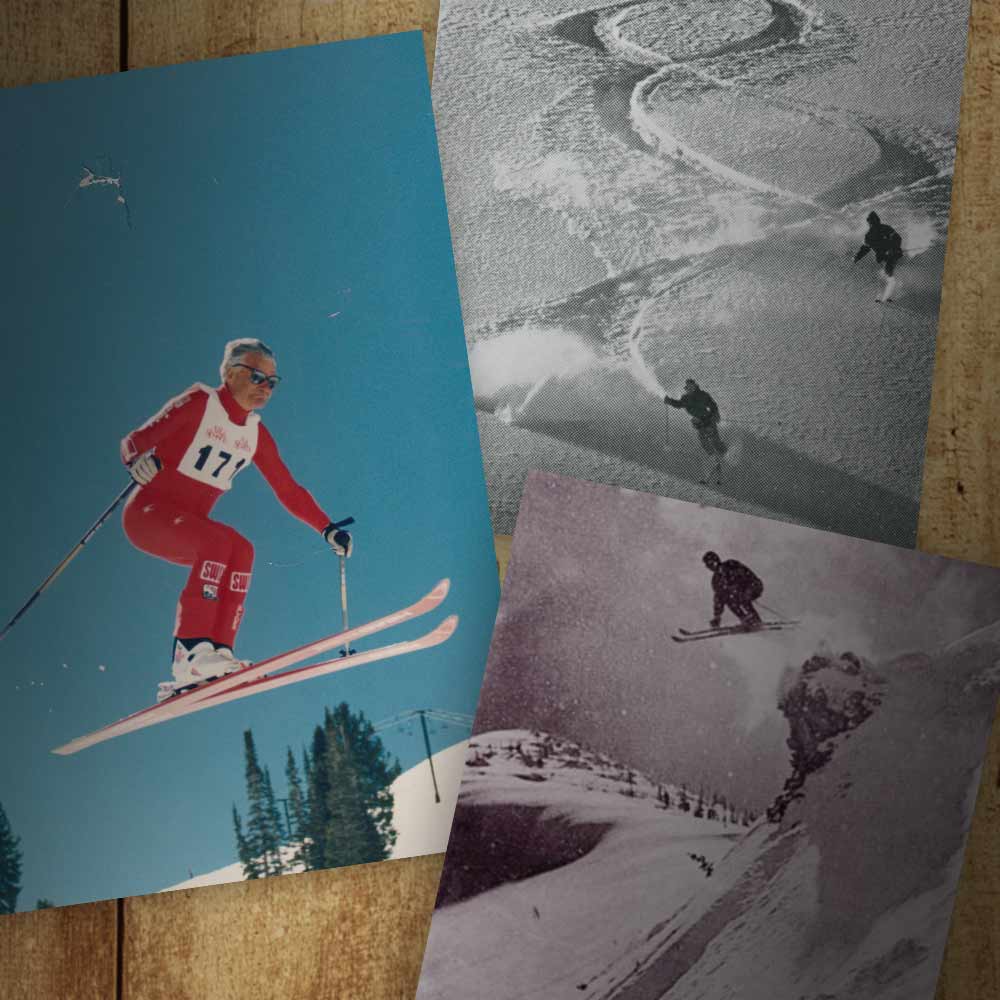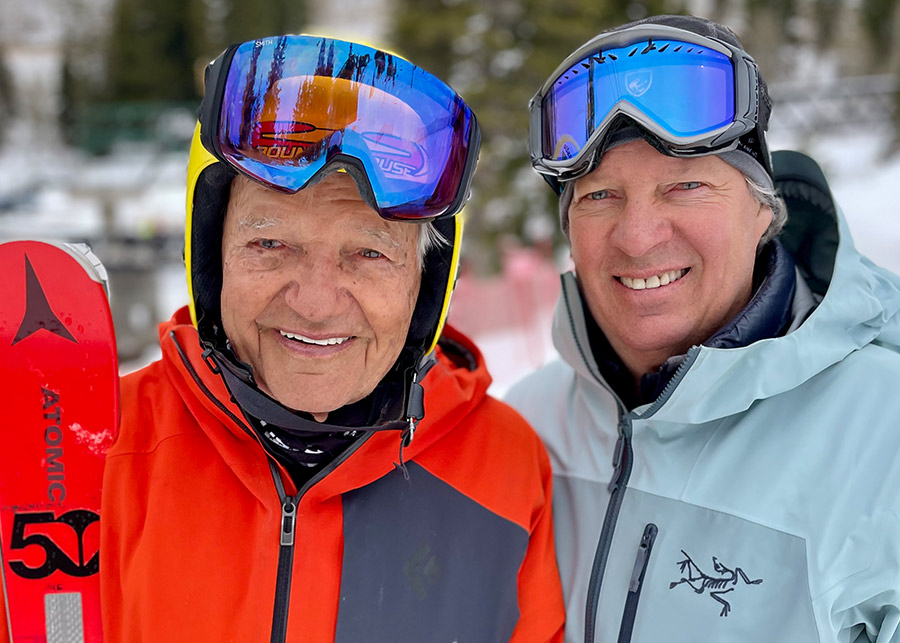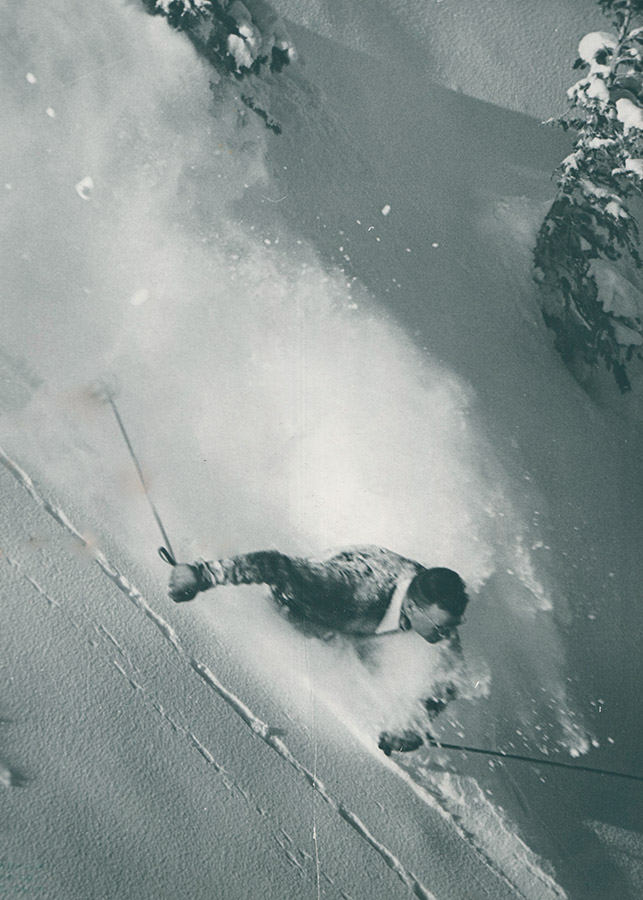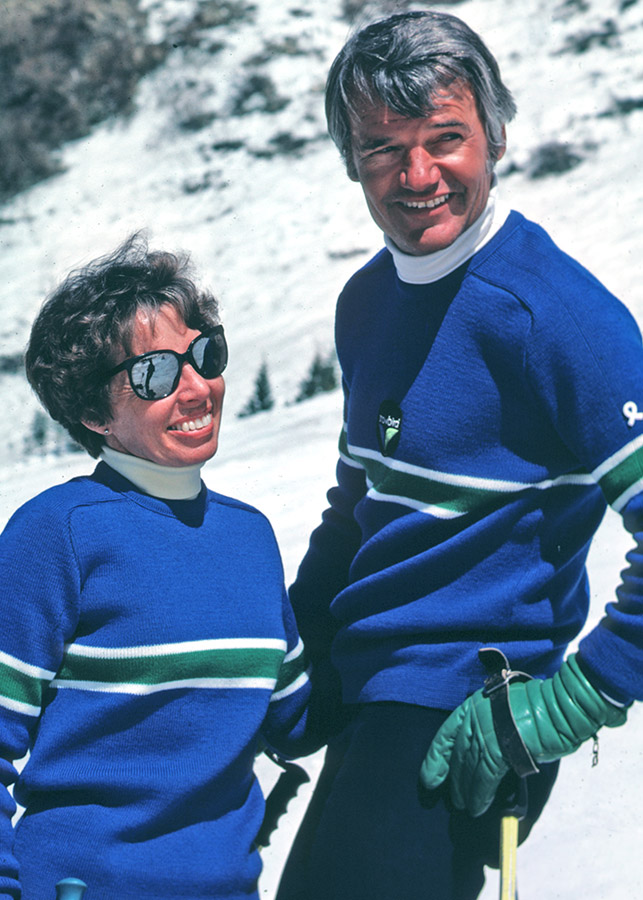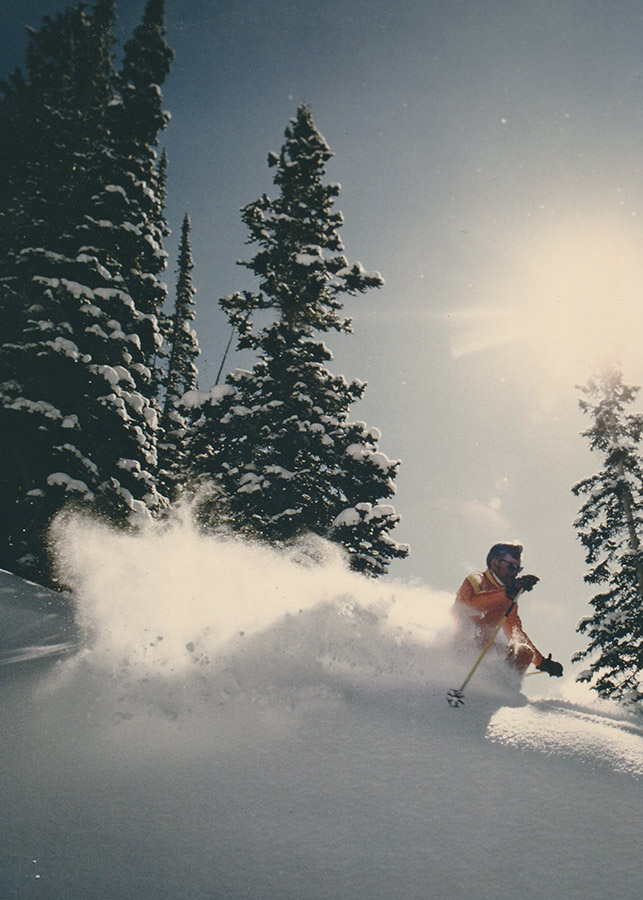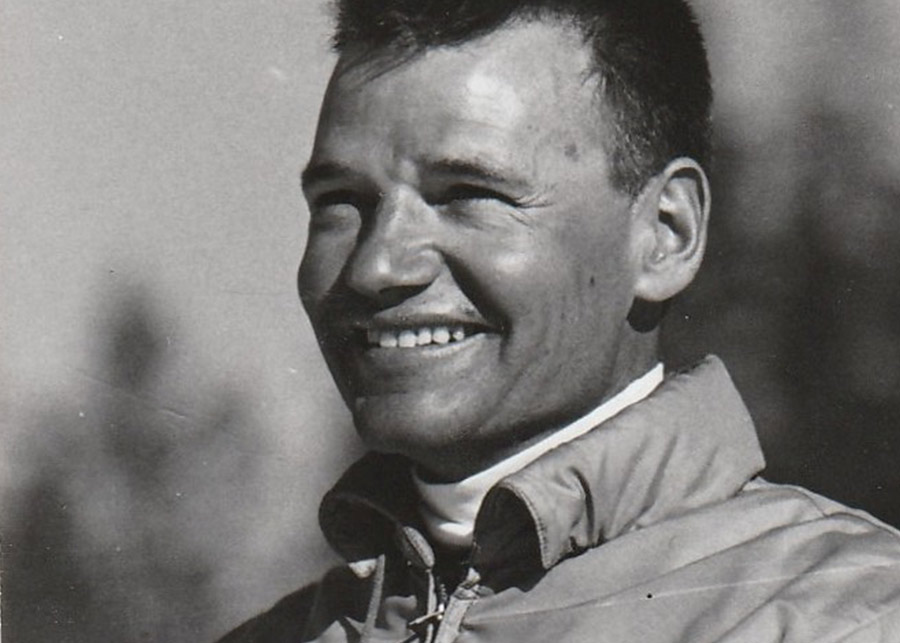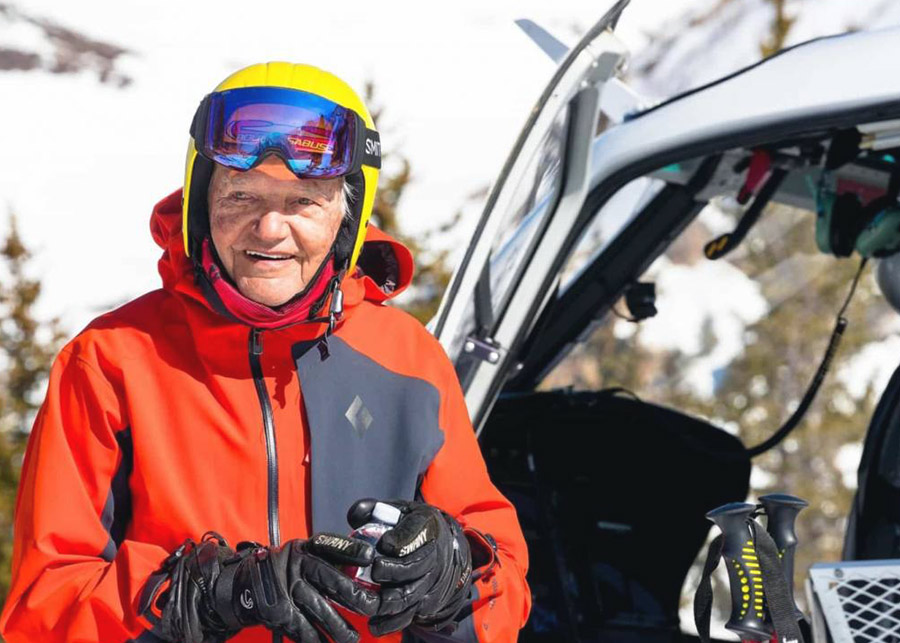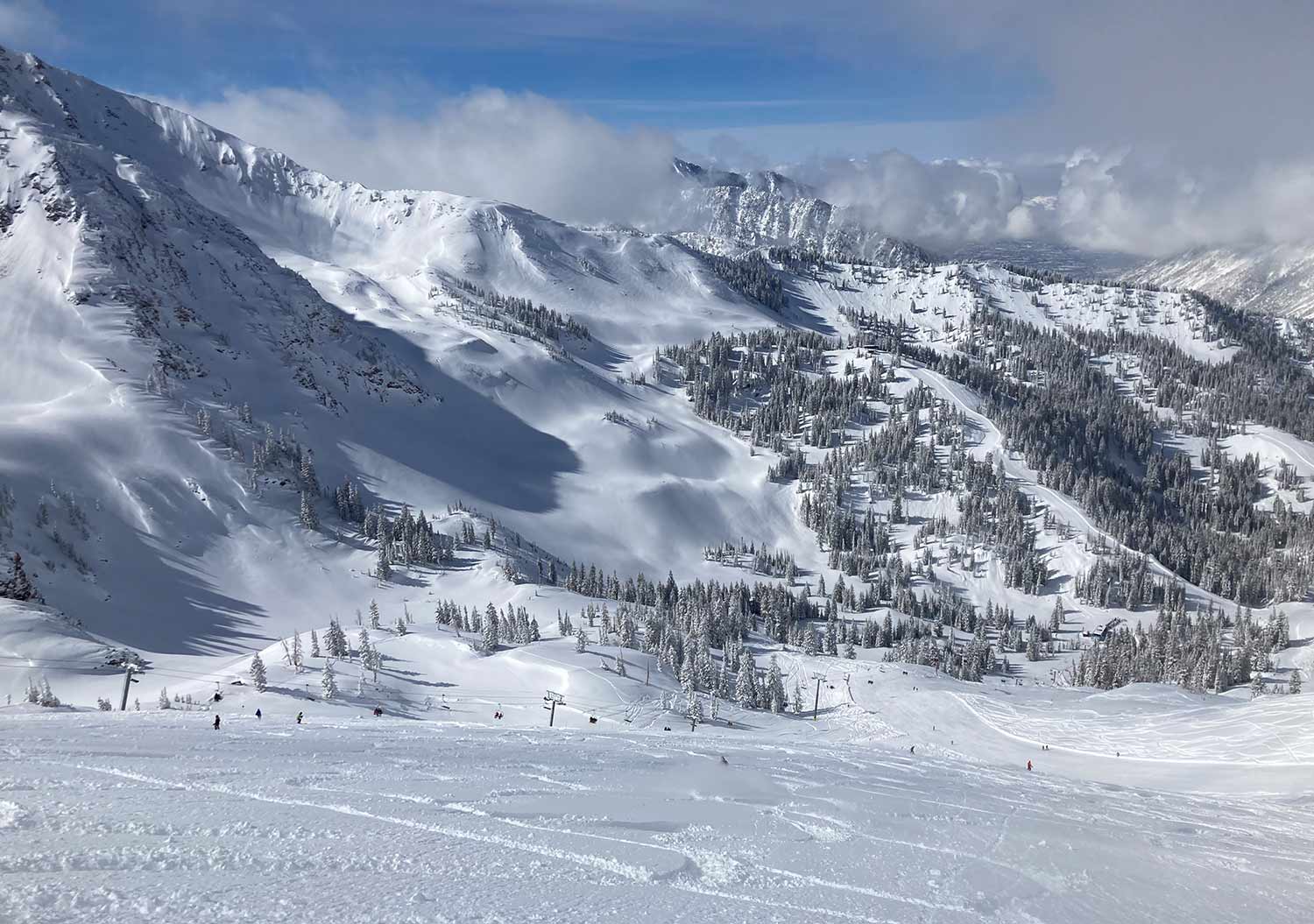Steve and I share a look. Junior Bounous’s legs not remembering how to ski powder is like a fish not remembering how to swim. We have no doubt that Junior will be able to ski the few inches of powder we’re about to go hunting for. The trick will be making him believe that, too.
The shock of losing his partner of 70 years nearly killed him. After her passing, my family watched as Junior struggled through his grief. His doctor told us he was in danger of dying of a broken heart. We knew that Junior still had the physical ability to keep skiing and that he had so much more life to live—he just needed to break through this crux of grief, the most frightening time of his life. The best solution was right there in his his storied past.
Get him moving.
After Maxine passed away at the end of June, Junior could barely walk up the slight incline in his neighborhood before tiring out. My family made it our number one priority to get him walking every day. By his 95th birthday in August, he was hiking four miles daily at 10,000 feet in the Uinta Mountains. (And still had energy in the evening to drink margaritas.) So, when the ski season rolled around, we knew that Junior had it in him to ski powder again—he just had to remember how.
When Junior began his ski career, skiing at Alta in the 1940s and ‘50s was a little like skiing in the “Wild Wild West.” Receiving an average snowfall of more than 500 inches a year, Alta quickly gained its reputation as one of the snowiest ski areas in the US.

